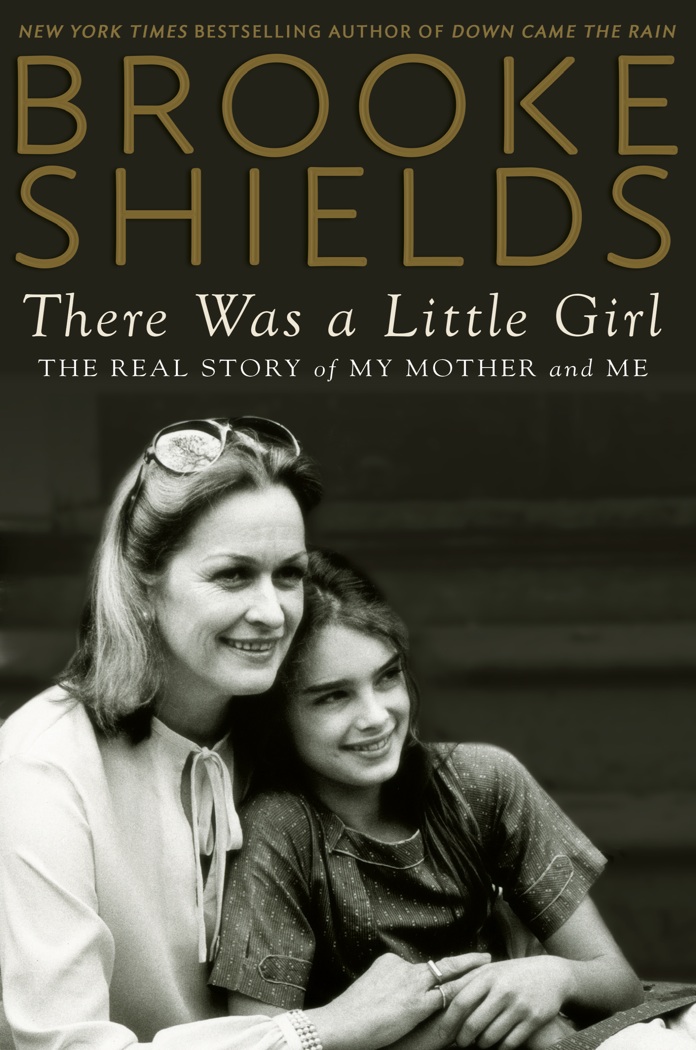
Brooke Shields
There Was a Little Girl: The Real Story of My Mother and Me
Published by Dutton
Dec 04, 2014
Web Exclusive
![]()
If you grew up in the ‘70s, ‘80s, or even ‘90s, you surely know who Brooke Shields is. The star of films such as Pretty Baby and Blue Lagoon in her youth, Suddenly Susan in the ‘90s, and countless commercials and advertisements through the years, Shields became a recognizable face and household name. For much of her career, Shields was managed by her mother, Teri, who was also a single parent, divorcing Shields’ father when Brooke was only five months old. Controversy swirled throughout Shields’ early professional career, with boundary-pushing quasi-seductive early roles and ad campaigns that relied on double-entendre, and much of the blame was laid at the feet of Teri. Part of Shields’ motivation in this memoir is to set the record straight. Teri is presented as always protective of her daughter in her roles and advertisements, never exploitive.
However, more so than a defense of Teri per se, There Was a Little Girl is a rich tale of mother-daughter enmeshment. As a single parent, Teri was the sole full-time adult in Shields’ world, and she is presented in this book as one who was ever involved in all aspects of her daughter’s life. The emotional connection was strong, perhaps dysfunctionally so, and as such, Shields’ life seemed too often plagued by worry, guilt, and responsibility for and at the hands of her mother. Teri does not get off lightly. An alcoholic for whom her daughter often tried to intervene, Teri’s own demons are reflected throughout the text and ultimately seem at least somewhat responsible for her daughters’ own neuroses. Shields presents There Was a Little Girl as something of a dual autobiography/biography, of her and her mother, always intertwined, rarely separated, two individuals but more like one entity. Shields’ famous paramours and her marriage to (and divorce from) Andre Agassi are discussed, but these characters are only peripheral in the story.
What is most fascinating about There Was a Little Girl is the mother-daughter enmeshment, how Teri’s issues both became and affected Brooke’s, how two lives were so intertwined as to blur lines of the parent-child dynamic. Shields’ writing shows insight, but what is somewhat disappointing is that her story is told almost without the gravity, the emotion, and the visceral hurt that one would think it would require. Instead, it is a story told matter-of-factly. Anecdotes, while present, are rarely fleshed out. One can tell the push and pull between outing her mother for her faults and being reverential and deferential to her memory, as a loving daughter would be. The mixed feelings come across in the words but the emotional effect is often more implied. The book ends with a revelation about the elder Shields that serves to explain much of what comes prior, and while I won’t divulge here, it’s a most enlightening piece of the puzzle.
Shields should be commended for her honesty and openness in writing There Was a Little Girl. Her tale is case study interesting and could not have been easy to pen. One just wishes it cut a little deeper. (www.penguin.com)
Author rating: 6/10
Current Issue

Issue #72
Apr 19, 2024 Issue #72 - The ‘90s Issue with The Cardigans and Thurston Moore
Most Recent
- High Water Festival, Charleston, South Carolina, US, April 20-21, 2024 (Review) —
- Forgiveness Is Yours (Review) —
- The Ballad of Speedball Baby: A Memoir (Review) —
- Maggie Rogers @ House Of Blues, Chicago, US, April 19, 2024 (Review) —
- 10 Best Songs of the Week: Nilüfer Yanya, Linn Koch-Emmery, Fat Dog, Crumb, St. Vincent, and More (News) —

Comments
Submit your comment
April 23rd 2015
8:32am
Talking about generation gap we should notice that not always mother and daughter are strongly separated. Sometimes they are the best friends